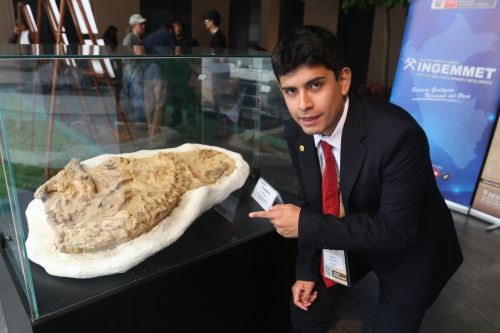09:09 | Ica (Ica region), Nov. 28.
The
Geological, Mining, and Metallurgical Institute (Ingemmet) presented to the public for the first time an articulated and almost complete skeleton of what is believed to be a juvenile fossil gharial, a species of prehistoric crocodile, discovered in late 2023 in the Ocucaje Desert, Ica region.
The fossil was discovered by Peruvian paleontologist Mario Urbina at the end of last year.
The recovery and collection of the specimen were carried out with the collaboration of specialists from Ingemmet and La Union School.
The fossil belongs to a juvenile specimen of the gharial-type crocodile, estimated to be between 10 and 9 million years old, from the Pisco Formation, Miocene, stated Ingemmet Vertebrate Paleontologist Mario Gamarra.
Likewise, the expert highlighted the excellent state of preservation and near completeness of the fossil, "characteristics that make it very special."

Speaking to
Andina News Agency,
Mario Gamarra said that this specimen possibly belongs to the genus Piscogavialis, which will be confirmed by the studies to be conducted.
He explained that the gharial crocodile fossil belongs to a juvenile specimen that measured about 3 meters in length.
"This is the first time that a juvenile specimen of this species has been recorded, with adults reaching over 9 meters in length," Gamarra stated.
After highlighting the exceptional preservation of the fossil, the researcher indicated that the rescue and collection work was difficult because it (the fossil) was located in a hard sandstone terrain.
"It was very complicated and tough because the matrix was very hard," he noted.
The paleontologist recalled that Ocucaje is a fossil-rich site internationally recognized by researchers around the world.
Lastly, Gamarra indicated that the fossil will be exhibited to the public in the room set up by Ingemmet at its Lima headquarters starting in December.
(END) MAO/MVB
Published: 11/28/2024